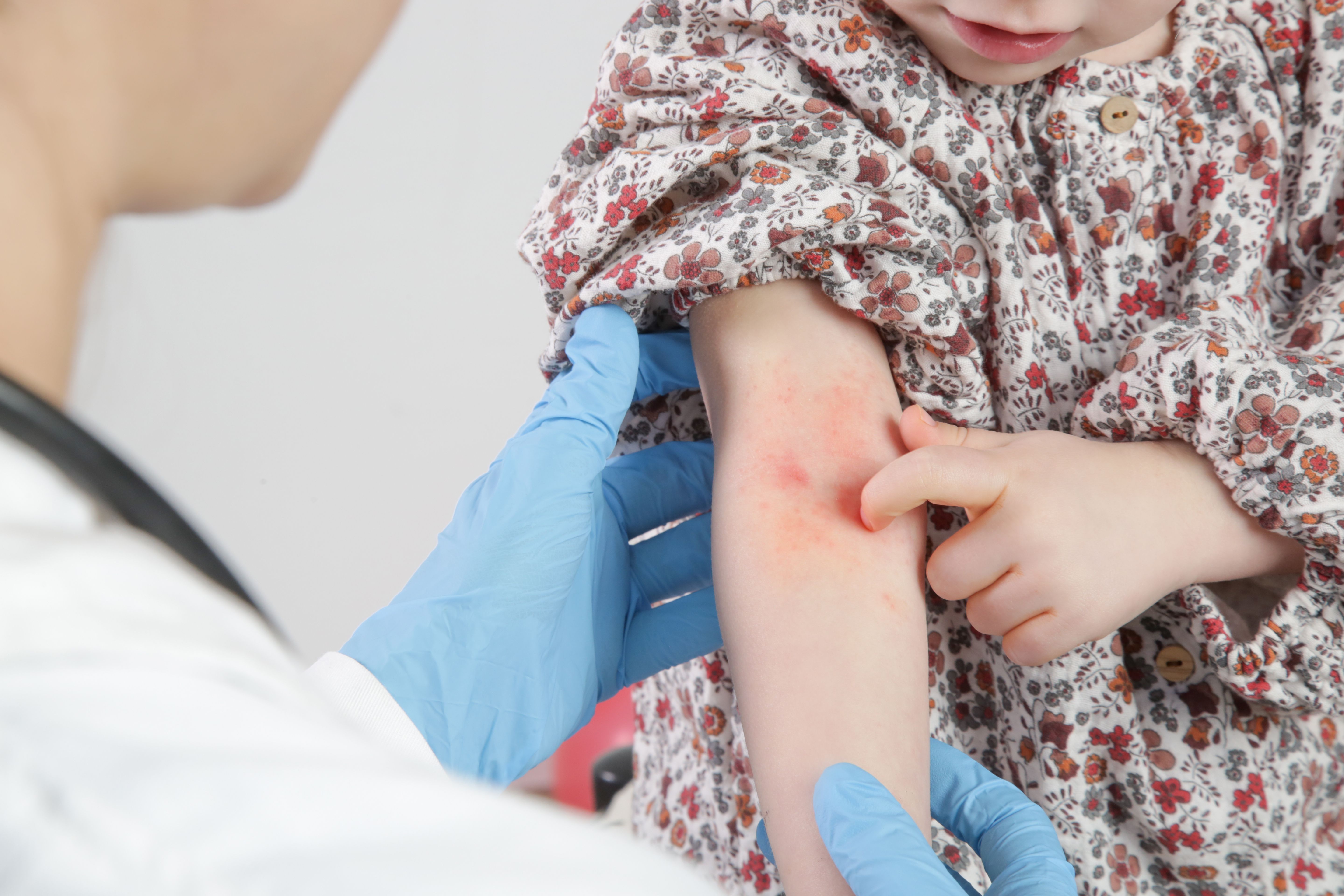Study lays groundwork for potential vaccine customized for children with recurrent eczema flares
These data from investigators at Trinity College Dublin highlighted the immune response mechanisms visible in children with atopic dermatitis.
Study lays groundwork for potential vaccine customized for children with recurrent eczema flares | Image Credit: © triocean - © triocean - stock.adobe.com.

New research was conducted regarding the immune response mechanisms in eczema cases linked to the Staphylococcus aureus (S. aureus) bacterium, with the findings indicating the possibility of a future customized vaccine for bacterial-triggered atopic dermatitis flare-ups in children.1
This new research was carried out by a diverse team at Trinity College Dublin in Ireland, with the team seeking to identify the novel cellular targets which could be focused on when developing a vaccine for children with these types of eczema flares. They looked into the immune response mechanisms which are involved in eczema linked to Staphylococcus aureus bacterium.
Eczema, referred to interchangeably here as atopic dermatitis, is known to impact a substantial portion of children living in Ireland and around the world, with patients facing the common symptoms of dry skin, pruritus, and more. In cases where bacteria is involved, symptoms can involve weeping wounds and severe infections later on, with the ever-present possibility of life-threatening infections such as septicaemia.
“While an interaction between the Staphylococcus aureus bug and eczema has been known for many decades, novel scientific approaches are continuing to make key discoveries about the complex relationship between these bacteria and human responses to it,” study author and professor of dermatology Alan Irvine said in a statement. “Our work outlines new discoveries about how children with eczema respond immunologically to infection with this common bacterium.”2
Background and Findings
Lead author Julianne Clowry, a consultant dermatologist and visiting research fellow at Trinity College Dublin, emphasized the urgency of new approaches to infected eczema flare-up management and prevention among children. Commonly-used options for such cases often result in limited success, with frequently short-lived relief.2
Additionally, there is a notable growing threat of antimicrobial resistance, which the investigators’ research into the mechanisms behind the condition. The investigators sought to explore the crucial "immune signatures" seen among children who report infected flare-ups of atopic dermatitis, with such signatures allowing for specific targets for future vaccine development strategies.
They evaluated a total of 93 children, with the age range being between 0 - 16. The research team worked to compare the immune responses of 3 stratified cohorts: individuals with atopic dermatitis and confirmed S. aureus skin infection, individuals with the skin disease but no S. aureus infection, and individuals who were deemed to be a healthy control group.1
Overall, the team’s key finding was that among these 3 groups there had been a significant variation in proportions of certain immune cells known as "T cells," in addition to other biomarkers. The research highlighted novel data regarding both the cutaneous and systemic immunological profiles linked with S. aureus skin infection in those with eczema.2
The investigators noted that T cells were involved in a diverse set of roles in patients’ immune responses, noting the suppression of vital T cell types as vital for a well-addressed immune response in children experiencing infected eczema flare-ups.
Such insights were viewed by the research team as new groundwork for the eventual development of targeted treatments designed to allow for effective relief from recurrent flare-ups of the skin disease. Rachel McLoughlin, a professor of immunology at Trinity and senior author of the study, commented on the team’s findings.
“This work has identified an overall pattern of immune suppression associated with infected flares of eczema, which results in the suppression of specific T cells that are vital to help initiate an effective immune response,” McLoughlin explained in her statement. “Further work is now required to broaden the scope of these results, by expanding to a larger number of people. This will help confirm if the patterns identified are consistent among different age groups, and in sub-groups with greater ethnic diversity.”2
McLoughlin also noted that the team viewed the potential of a more comprehensive awareness of the S. aureus bacterium immune response for those with atopic dermatitis. She added that such an understanding has the potential to revolutionize approaches to eczema therapy and allow for a translational impact in the management of the skin condition.
This article was initially published by our sister publication, HCPLive®.
References:
- Clowry J, Dempsey D, McLoughlin R, et al. Distinct T cell signatures are associated with Staphylococcus aureus skin infection in pediatric atopic dermatitis. JCI Insight. 2024;9(9):e178789. https://doi.org/10.1172/jci.insight.178789.
- A tailored vaccine could one day treat eczema in children -- new research. Trinity College Dublin (EurekAlert!). May 8, 2024. https://www.eurekalert.org/news-releases/1043526. Date accessed: May 8, 2024.
Recognize & Refer: Hemangiomas in pediatrics
July 17th 2019Contemporary Pediatrics sits down exclusively with Sheila Fallon Friedlander, MD, a professor dermatology and pediatrics, to discuss the one key condition for which she believes community pediatricians should be especially aware-hemangiomas.